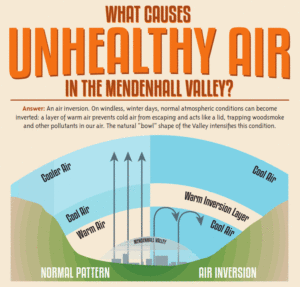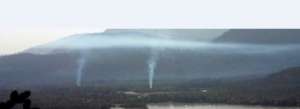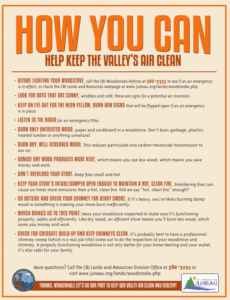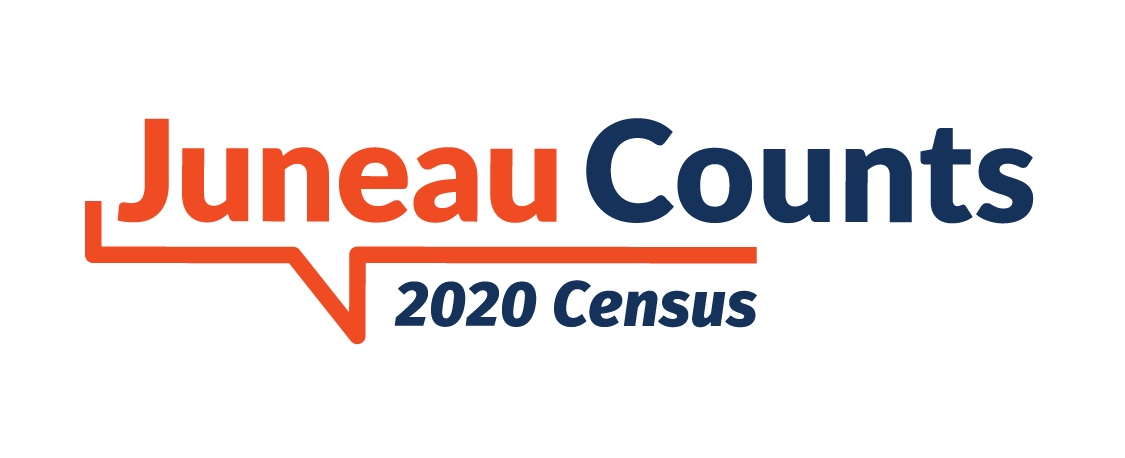
Contact Information:
Woodsmoke Hotline – 586-5333
Call the woodsmoke hotline for up-to-date information regarding the Mendenhall Valley’s air quality.
Enforcement – 586-0600
Please call the Juneau Police Department if you notice active burning and/or woodsmoke occurring during an Air Emergency.
Further Information – 586-5252
Please call the Lands & Resources Office if you have any other questions.
Forms, Permits & Applications
The CBJ Air Quality Monitoring Program: October 1 – April 30
- CBJ staff monitor air quality data hourly to detect fine particulates from woodsmoke in the air.
- If data shows high concentrations of these fine particulates, the CBJ will declare an air emergency, which prevents woodstoves from being used until the emergency is cancelled.
- The CBJ works in partnership with the Alaska DEC and NOAA to ensure the Valley’s air remains clean and healthy.
During an air emergency, all woodstove burning is prohibited until further notice as outlined in CBJ’s ordinance 2008-28 regarding solid fuel-fired burning devices. Pellet Stoves are exempt from the wood stove regulations and can burn at any time. Masonry heaters that fit the definition given by the Masonry Heater Association of North America are also exempt from the wood stove regulations.
An air emergency will be announced through press releases, advertising, and by utilizing the11 neon yellow air emergency signs in the Valley when air particulate levels reach, or are currently at, an unhealthy level and weather conditions will not clear the air. CBJ staff will always update the Online Air Quality Advisory and the Woodsmoke Hotline if an air emergency is or is not in effect.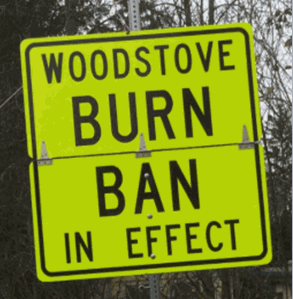
The maps below detail all homes located within the Woodsmoke Hazard Area:
All open burning is prohibited in the Mendenhall Valley and Lemon Creek area from October 1st through April 30th. Please use the below permit application for open burning between May 1st-November 1st.
Below are hourly air samples of fine particulates (pm 2.5) that were present in the Valley’s air during the 2015-16 air quality monitoring season. These samples were taken at the Department of Environmental Conservation’s Floyd Dryden Station, and demonstrate what is usually invisible to the eye: fine particulates from wood smoke.
Fine particulates from wood smoke are the ones that can lodge themselves deep into the lungs and significantly impact children, elders, and those with breathing difficulties. The darker the circles, the dirtier the air. If the air is clean, the hourly samples will run clear (almost invisible to the eye) when looking at the Beta Attenuation Monitor (BAM) tape. CBJ Lands and Resources staff monitors the data produced from these hourly air samples, and will call an air emergency if numerous readings in a row show that the air quality could threaten human health.
Notice the thick blanket of smoke shown above? That “blanket” or air inversion will continue to trap all the fine particulates from woodsmoke and open burning until wind or rain clean out the air. When it looks like an air inversion is forming, the City’s goal is to temporarily stop the use of Valley woodstoves and prevent the high concentration of fine particulates underneath that smoky blanket.
Monitoring the Mendenhall Valley’s air quality would not be possible without the collaboration and support of the Department of Environmental Conservation, Division of Air Quality team and the National Oceanic and Atmospheric Administration, Juneau Forecast Office who collect and interpret the data. Additional partnerships are with the Juneau Police Department, who enforce the air emergencies and burn bans, and the CBJ Clerks Office, which has posted when air emergencies are in effect or cancelled on the CBJ Facebook.
On October 5, 2016, CBJ Lands and Resources staff along with Alaska Department of Environmental Conservation went on Juneau Afternoon to discuss the 2016-17 Air Quality Monitoring Program. If you missed the conversation, click the below KTOO link and start listening in at minute 46.

